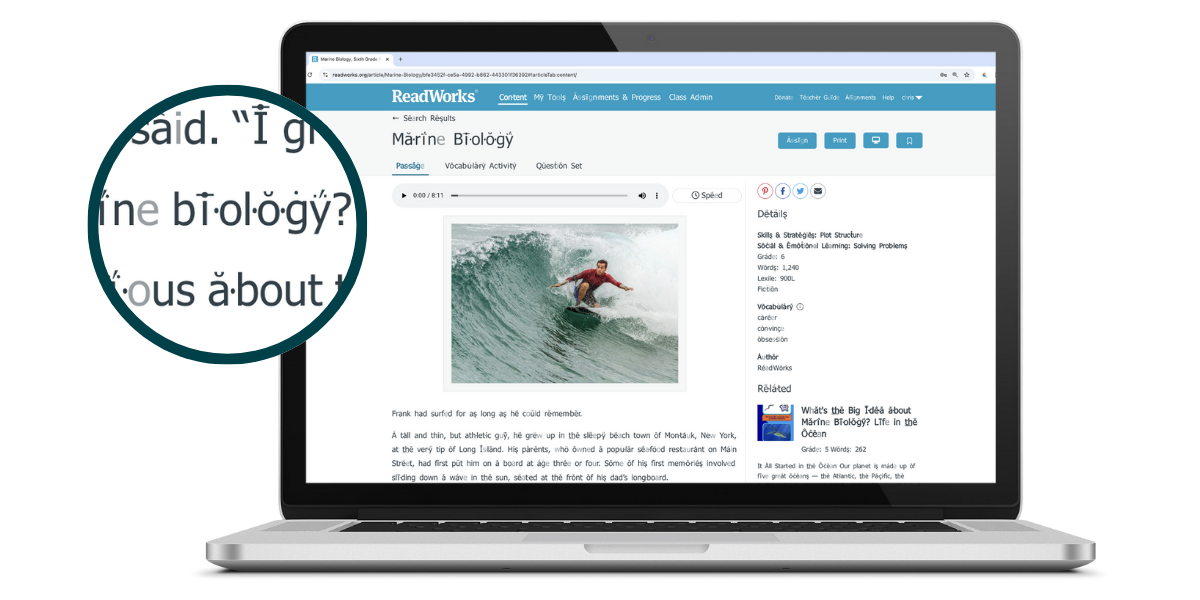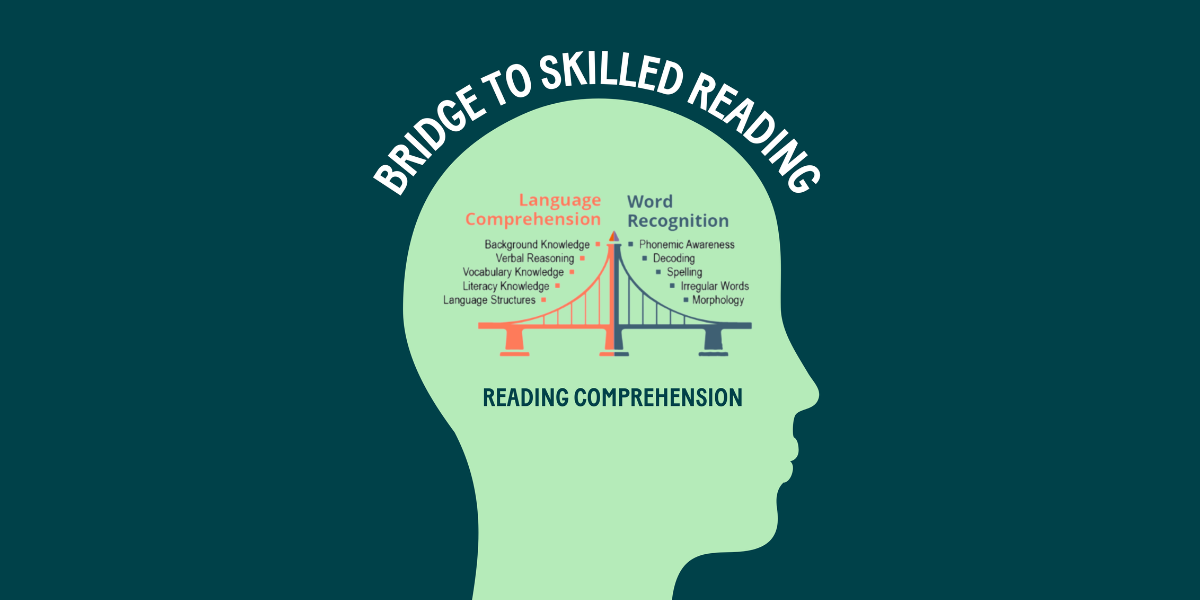Unlocking Literacy Power: Applying the Readable English Markup to HQIM and AI-Created Content
We are living in a golden age of educational technology. Tools like Magic School are using artificial intelligence to tailor and generate classroom...
K-12Discover how Readable English is transforming reading instruction |
PROGRESS MONITORINGEasily assess and monitor growth with data-driven insights and reporting tools |
PROFESSIONAL SERVICESDiscover the services that support your success, from virtual training to expert coaching |
INDIVIDUALSStrengthen your reading skills with an interactive app tailored to your learning needs |
PARENTSEmpower your child's reading journey with an interactive app and expert strategies for home support |
|

|
Rethinking Reading: How One District Transformed Instruction (SmartBrief)Discover how a bold shift in reading instruction helped struggling learners thrive - and the critical role Readable English played in their success.
|
RESEARCH & RESULTSExplore peer-reviewed studies and real-world case studies on Readable English in action |
BLOGExplore articles on feature highlights, research deep-dives, and the latest literacy insights |
EBOOKDownload the ebook Why Learning to Read English is So Hard and how to Make it Easier |
CUSTOMER STORIESDiscover how educators and administrators are transforming literacy with Readable English |
RESOURCE AND PRODUCT ENABLEMENT LIBRARYFind essential educational references and instructional materials to enhance teaching |
FAQSFind essential educational references and instructional materials to enhance teaching |
NEWS & EVENTSStay up to date with media coverage, webinars, and upcoming events featuring Readable English |
|
|
Rethinking Reading: How One District Transformed Instruction (SmartBrief)Discover how a bold shift in reading instruction helped struggling learners thrive - and the critical role Readable English played in their success. |
3 min read
Tammy Miller
:
Jul 26, 2024
The COVID-19 pandemic has left a lasting impact on student learning, with middle school students particularly bearing the brunt of these disruptions. New research from the NWEA highlights the stark reality: eighth graders are projected to need an additional nine months of schooling to reach pre-pandemic performance levels, while third graders require just over two months. This widening gap in student achievement underscores the urgent need for innovative solutions to help our students catch up. One such promising solution is Readable English.
Readable English is designed to make reading more accessible and intuitive for learners of all ages, particularly those who struggle with traditional literacy methods. By simplifying the complexities of the English language and providing visual cues, Readable English can play a crucial role in addressing the literacy challenges faced by middle school students in the post-COVID era.
Understanding the Literacy Gap
The NWEA’s findings reveal a troubling trend: across grades and subjects, students are performing worse than their pre-pandemic counterparts. Middle schoolers, in particular, are falling behind at an alarming rate. The average reading and math performance gap widened by 36% and 18%, respectively, during the last school year. This suggests that the learning disruptions experienced during the pandemic have had a cumulative effect, making it harder for students to catch up as they progress through school.
Middle school students are at a critical juncture in their education. They are transitioning from learning to read to reading to learn, and any gap or deficiency in literacy skills can significantly hinder their ability to succeed in more advanced subjects. This is where Readable English can make a difference.
How Readable English Works
Readable English transforms the way students interact with the text by incorporating visual aids (21 unique glyphs, syllable breaks, and grayed-out letters. See Figure 1. below) that make the pronunciation and understanding of words more intuitive. This approach addresses several key challenges faced by struggling readers:

Figure 1. Readable English’s patented system makes words easy to read and pronounce.
By seamlessly integrating a pronunciation guide into every word while keeping the spelling intact, Readable English makes the English language 99% phonetic. The pronunciation guide can be applied to most content (Digital or Print) via patented conversion technology. The result is an accessible text that quickly empowers students to read accurately with independence and confidence.
Addressing Middle School Challenges
For middle school students who are already behind in their literacy skills, Readable English offers several benefits that can accelerate their learning:
A Call to Action
NWEA’s analysis emphasizes the need for continued intervention strategies, including additional instructional time, tutoring, and summer school programs. However, to truly close the literacy gap, we must embrace innovative tools like Readable English that address the root causes of reading difficulties.
As we navigate the post-pandemic educational landscape, it’s clear that we cannot afford to take our foot off the gas. Middle school students have limited time left in the school system to benefit from interventions, and they need effective solutions now more than ever. Readable English offers a powerful way to support these students, helping them catch up and build the foundational skills they need for future academic success.
Incorporating Readable English into our literacy programs offers a strategic approach to addressing the challenges faced by middle school students impacted by educational disruptions. It’s time to turn the page on pandemic-related setbacks and write a new chapter of success for our students.

We are living in a golden age of educational technology. Tools like Magic School are using artificial intelligence to tailor and generate classroom...

For many struggling readers, traditional phonics instruction alone isn’t enough. Research shows that an estimated 25% of students with reading...

In today’s Sneak Peek, we’re diving into one of the most exciting updates of the learning portal refresh: the flexible implementation options! This...